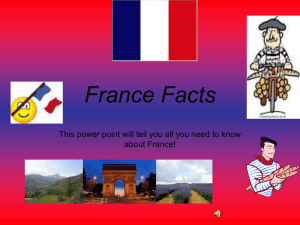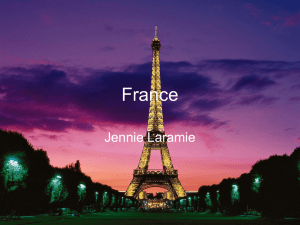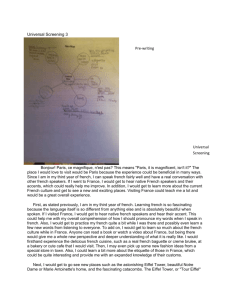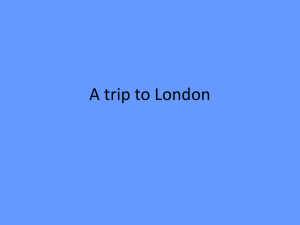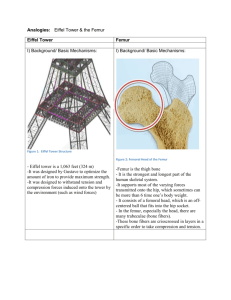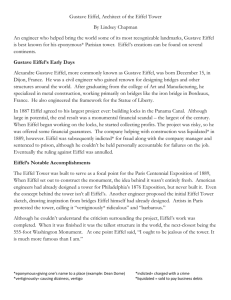THE EIFFEL TOWER
advertisement
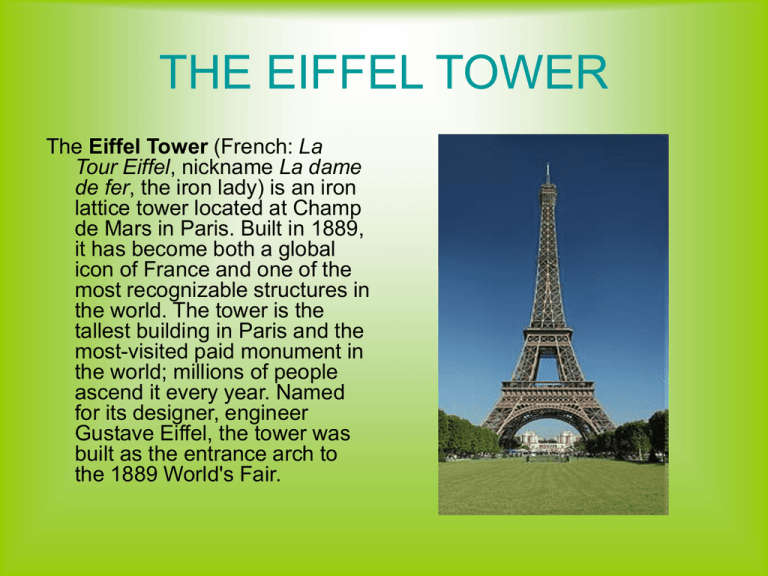
THE EIFFEL TOWER The Eiffel Tower (French: La Tour Eiffel, nickname La dame de fer, the iron lady) is an iron lattice tower located at Champ de Mars in Paris. Built in 1889, it has become both a global icon of France and one of the most recognizable structures in the world. The tower is the tallest building in Paris and the most-visited paid monument in the world; millions of people ascend it every year. Named for its designer, engineer Gustave Eiffel, the tower was built as the entrance arch to the 1889 World's Fair. FEATURES The tower stands 324 metres (1,063 ft) tall, about the same height as an 81-story building. Upon its completion, it surpassed the Washingto Monument to assume the title of tallest man-made structure in the world, a title it held for 41 years, until the Chrysler Building in New York City was built in 1930; however, due to the addition in 1957 of the antenna, the tower is now taller than the Chrysler Building. Not including broadcast antennas, it is the second-tallest structure in France after the 2004 Millau Viaduct. Material The pig iron structure of the Eiffel Tower weighs 7,300 tonnes while the entire structure, including nonmetal components, is approximately 10,000 tonnes. As a demonstration of the economy of design, if the 7,300 tonnes of the metal structure were melted down it would fill the 125 metre square base to a depth of only 6 cm (2.36 in), assuming the density of the metal to be 7.8 tonnes per cubic metre. Depending on the ambient temperature, the top of the tower may shift away from the sun by up to 18 cm (7.1 in) because of thermal expansion of the metal on the side facing the sun. HISTORY The structure was built between 1887 and 1889 as the entrance arch for the Exposition Universelle, a World's Fair marking the centennial celebration of the French Revolution. Three hundred workers joined together 18,038 pieces of puddled iron (a very pure form of structural iron), using two and a half million rivetsMaurice Koechlin. Eiffel was assisted in the design by engineers Émile Nouguier and Maurice Koechlin and architect Stephen Sauvestre. The risk of accident was great as, unlike modern skyscrapers, the tower is an open frame without any intermediate floors except the two platforms. However, because Eiffel took safety precautions, including the use of movable stagings, guard-rails and screens, only one man died. The tower was inaugurated on 31st March 1889, and opened on 6 May. Timeline of events • 10th September 1889 – Thomas Edison visited the tower. He signed the guestbook with the following message— To M Eiffel the Engineer the brave builder of so gigantic and original specimen of modern Engineering from one who has the greatest respect and admiration for all Engineers including the Great Engineer the Bon Dieu, Thomas Edison. • 4th February 1912 – Austrian tailor Franz Reichelt died after jumping 60 metres from the first deck of Eiffel tower with his home-made parachute. • 1940-1944Upon the German occupation of Paris in 1940, the lift cables were cut by the French so that Adolf Hitler would have to climb the steps to the summit. The parts to repair them were allegedly impossible to obtain because of the war. In 1940 German soldiers had to climb to the top to hoist the swastika, but the flag was so large it blew away just a few hours later, and was replaced by a smaller one. When visiting Paris, Hitler chose to stay on the ground. It was said that Hitler conquered France, but did not conquer the Eiffel Tower. • A Frenchman scaled the tower during the German occupation to hang the French flag. In August 1944, when the Allies were nearing Paris, Hitler ordered General Dietrich von Choltitz, the military governor of Paris, to demolish the tower along with the rest of the city. Von Choltitz disobeyed the order. Some say Hitler was later persuaded to keep the tower intact so it could later be used for communications. The lifts of the Tower were working normally within hours of the Liberation of Paris.
